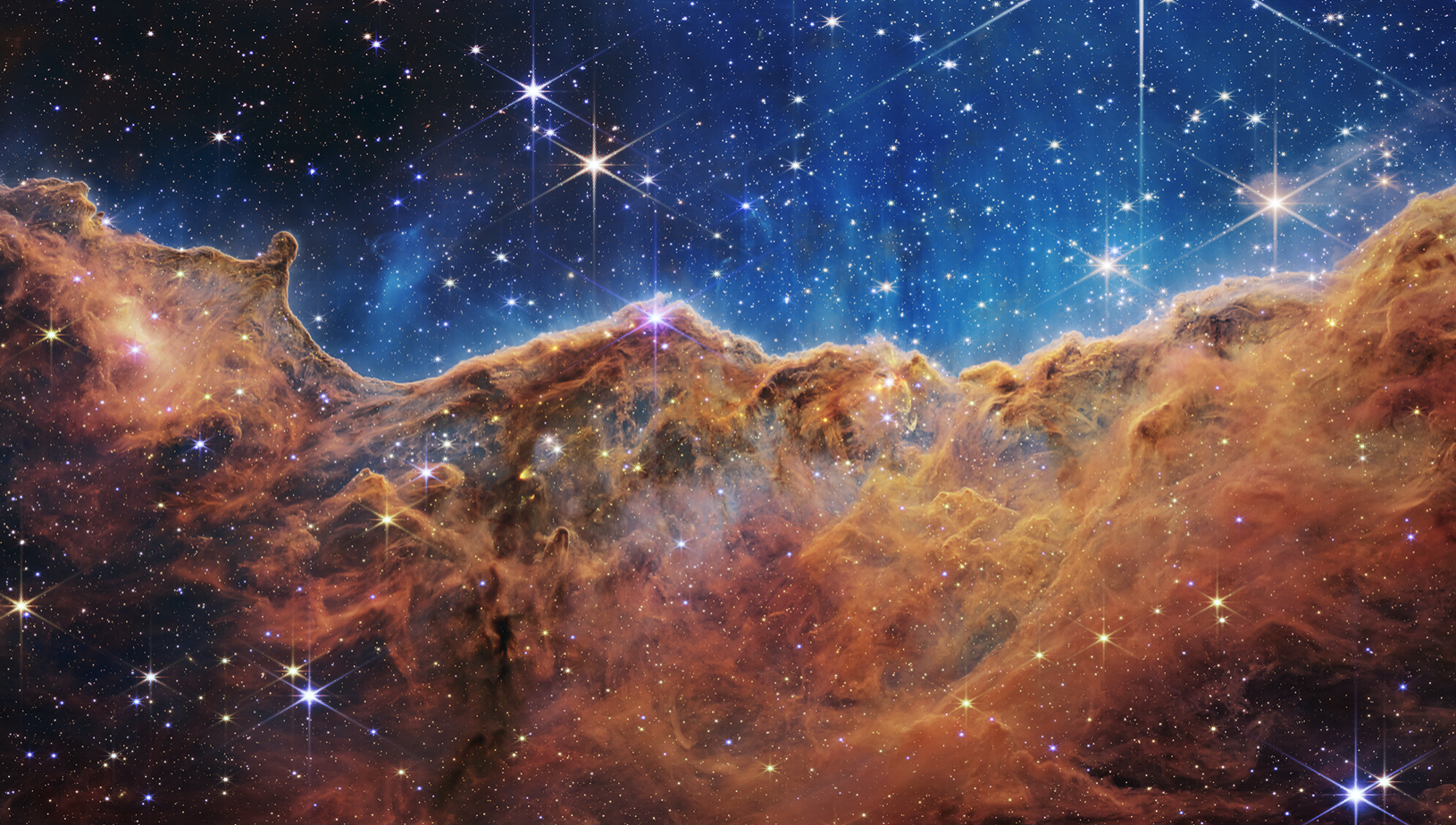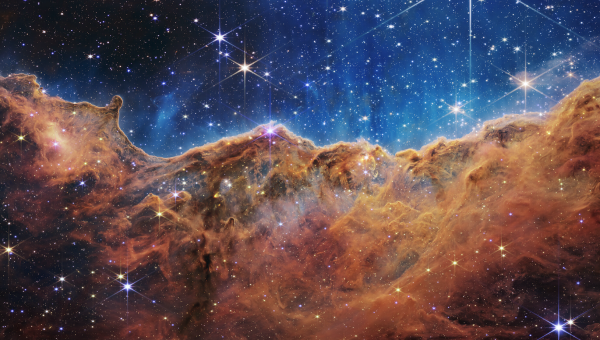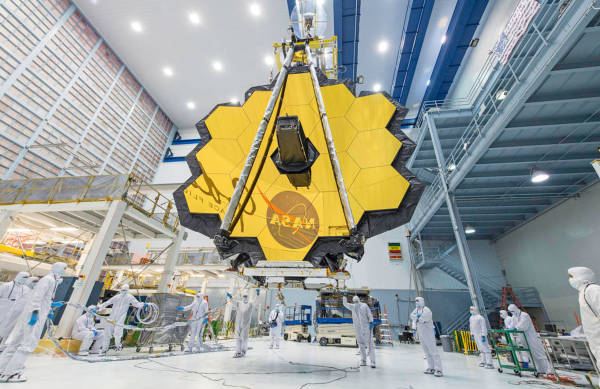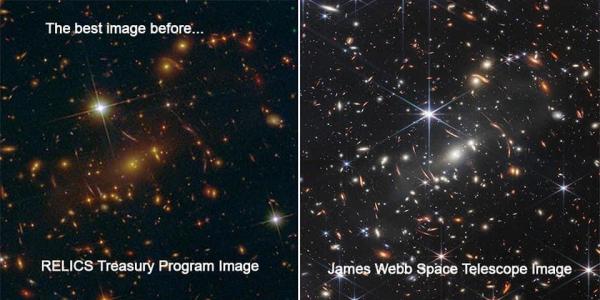KID REPORTERS’ NOTEBOOK
Webb Telescope Pushes Boundaries


This JWST image shows areas of star birth that had previously not been visible to scientists.
On July 11, the world saw the first full-color photographs taken by the James Webb Space Telescope (JWST). Launched in 2021, the JWST cost $9.7 billion to build. The United States National Aeronautics and Space Administration (NASA) led the effort, with assistance from the European and Canadian space agencies.
The first photos show a massive galaxy cluster called SMACS 0723. This cluster, which contains thousands of galaxies, is roughly 4.6 billion light-years from Earth. A light-year is the distance light travels in one year.
“We’re going to get a glimpse of light from other worlds, orbiting stars far beyond our own,” President Joseph R. Biden said after seeing the JWST images.

The JWST is shown under construction in 2017.
LOOKING THROUGH DUST CLOUDS
The JWST is the largest and most powerful space telescope in the world. The size of a three-story building, it has to be folded up to fit in a rocket. Already, the images it is generating far exceed the quality of images sent by its predecessor, the Hubble.
After the first JWST images were released, I emailed NASA to learn more. Sandra Irish, a lead structures engineer on the project, explained that in the JWST, “the mirror was designed to be segmented, rather than one large mirror like Hubble, for several reasons: provide a larger light-collecting area, have it fit inside the rocket, and have it adjust in orbit.”
The new telescope views space in infrared wavelengths, which allows it to look through dust clouds. This capability is vital when examining universes billions of light-years away.

A side-by-side comparison shows the improvement in clarity that the JWST provides (right) and a previous image taken in 2017 by the Hubble Space Telescope.
IS THERE LIFE ELSEWHERE?
The telescope also features a large sun shield to protect its sensitive instruments from direct sunlight. According to Irish, the instruments need to function at “roughly -390.00˚ Fahrenheit (F), and that is very difficult to accomplish.” The difference between the shield-protected and unprotected parts of the telescope is around 600˚F.
Scientists have high hopes for the new technology. They say it will revolutionize the way they collect data and expand our understanding of the universe. “I personally am most interested in understanding the composition of exoplanets [planets outside of the solar system] and if there is life [out there],” Irish told me.
The JWST is also inspiring young people. “The photos are really mesmerizing,” said Peter S., 14, of Los Altos, California. “I hope that through more discovery and projects like this, we will be able to learn more about our universe.”
